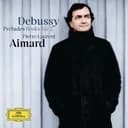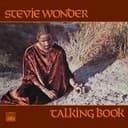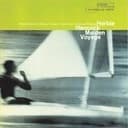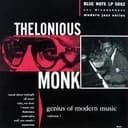The Complementary Whole-Tone Scale
The C♯/D♭ Whole-Tone scale represents the second of only two possible whole-tone collections in the twelve-tone chromatic system. While Whole-Tone Scale 1 contains C-D-E-F♯-G♯-A♯, this scale fills in the remaining six pitches: C♯-D♯-F-G-A-B. This complementary relationship means that together, these two scales account for all twelve chromatic pitches. In practical application, composers and improvisers can create stark contrasts by shifting between these two collections, producing a kaleidoscopic effect that maintains the whole-tone character while accessing all available pitch material. This technique appears frequently in Debussy's piano preludes, where sudden shifts between the two whole-tone scales create shimmering harmonic landscapes that seem to dissolve and reform.
Harmonic Ambiguity and Tonal Color
The defining characteristic of the C♯/D♭ Whole-Tone scale is its complete lack of a tonal center, which stems from its symmetrical construction of six consecutive whole steps. Unlike D♭ Major or other traditional scales that establish clear hierarchies between tonic and dominant, the whole-tone scale contains no perfect fifths or fourths—only augmented fourths (tritones) and augmented chords. This creates a floating, directionless quality that resists resolution, making it ideal for depicting dream sequences, underwater scenes, or supernatural moments in film scores. The scale can be harmonized entirely with augmented triads (C♯aug, D♯aug, Faug, Gaug, Aaug, Baug), which themselves are symmetrical structures that further reinforce the ambiguous, ethereal character. Composers exploit this harmonic vagueness to suspend listeners in a state of tonal uncertainty, creating tension that can either resolve dramatically when returning to conventional harmony or persist to maintain an otherworldly atmosphere.
Classical and Contemporary Usage
Claude Debussy's pioneering use of the whole-tone scale in works like "Voiles" (Preludes, Book I) and "L'isle joyeuse" established it as a cornerstone of Impressionist harmony, where it evoked shimmering light, water, and atmospheric effects. Maurice Ravel similarly employed whole-tone passages in pieces like "Daphnis et Chloé" to create moments of suspended animation and mystical transcendence. In the jazz tradition, players like Thelonious Monk and Herbie Hancock integrated whole-tone scales over dominant seventh chords and augmented harmonies, particularly in modal and post-bop contexts where harmonic ambiguity serves improvisational exploration. Contemporary film composers—including John Williams, Danny Elfman, and Alexandre Desplat—routinely deploy whole-tone scales to underscore magical transformations, alien landscapes, and psychological disorientation. Video game composers have also embraced the scale for fantasy and science fiction settings, where its otherworldly quality enhances immersive world-building and creates memorable sonic signatures for specific characters or locations.
Integration with Other Scales
While the C♯/D♭ Whole-Tone scale creates powerful standalone effects, its true versatility emerges when combined with other harmonic materials. Composers frequently transition between whole-tone passages and C♯ Chromatic runs to maintain harmonic ambiguity while increasing rhythmic intensity and melodic complexity. The scale also pairs effectively with diminished scales and octatonic collections, as both share symmetrical properties and augmented/diminished interval content. Jazz improvisers often approach whole-tone scales as upper-structure extensions over altered dominant chords—for instance, playing the C♯/D♯/F/G/A/B whole-tone collection over a G7♯5 chord to create sophisticated polytonal textures. Creative practice involves using the whole-tone scale as a transitional device between distantly related key centers, exploiting its tonal neutrality to smooth otherwise abrupt modulations. Pianists and guitarists can develop facility with the scale by practicing it in parallel with Whole-Tone Scale 1, alternating between the two collections to internalize their complementary relationship and expand improvisational vocabulary across the entire chromatic spectrum.





